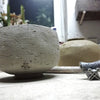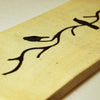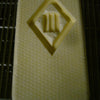Game of Pairs with Relyef
Learning - Through play

Tiles can have different colors and structures.

Characters that fit together do not have to be only 2, there can be matching pairs of 3 or 4 - as in the game below.



Stamp decoration can take many forms.
Memory game of matching pairs
We will create a game of matching pairs from clay. This one is designed to match the animal's footprint to its silhouette, its name in the native (in this case Czech) language, and the selected foreign language.
Players of the game then will have to remember and collect all 4 pieces, not just 2, as is the case with most games of matching pairs. This game practices not only memory but also language skills, recognizing animals, and matching tracks.
What we will need:
- Ceramic clay (the finer the clay the cleaner and more legible the prints will be)
- Roller or Slab roller
- Ceramics Rib
- Fabric or another absorbent and non-stick pad
- Angle ruler or two rulers
- Knife
- A needle or other tool to pierce the bubbles in the clay
-
Stamps Relyef - Animals and footprints

Tools

Relyef stamps
Instructions
Most of the work is done on a sturdy workbench with good lighting. It is a good idea to wedge clay thoroughly before making the slab.
Roll out slab on the fabric or other absorbent mats. This is to prevent the clay from sticking to the work table.
We can roll one large slab on the Slab roller or smaller slabs using a regular roller. If working with children each can create one set of 4 tiles for one animal.
Smooth the slab out with a plastic rib before you start drawing your cutting pattern.

Slab from clay.
When planning the size of the tiles we need to take into account the size of the stamps and the length of the inscriptions.
Using an Angle ruler and a ruler, we cut out squares or rectangles. Measuring when creating the grid is crucial so that all the pieces are the same size. If we let children do this part, we choose a blunt knife or another suitable tool that can be used to make precise cuts. We can also use a cookie cutter just to mark a space for stamping and cut the tiles for them after stamping is done.

Draw the pattern on the slab.
Here comes the part where we will apply the stamps. To learn more about how to prepare clay before this procedure, see our article How to correctly prepare clay for stamping.
We plan stamps so that we have sets of footprints, a picture of the relevant animal, and its name in the native language and the chosen foreign language (we can prepare inscriptions for children by fixing the stamps together using adhesive tape so that they are in a straight line). The footprints can be stamped once or multiple times to imitate real prints animals leave in nature.

Take care stamping precisely.

After all of the tiles are stamped, we cut the plate into individual pieces. If we let children do this part, we choose a blunt knife or another suitable tool that can be used to make precise cuts.

Cut the tiles using a ruler or angle ruler.
Let all tiles dry. It is good to dry it slowly and between the Ytong bricks or gips boards so that the pieces do not warp as the clay shrinks during the drying process. Bisque all tiles. Then we can glaze and fire them to the glaze temperature.

Let them dry individually on an absorbent pad.

Use a sponge to clean the edges.

Bisque fire the tiles.

Glaze and fire to the glaze temperature.
Fun before and after.
And in addition, we get a quality educational tool.
How much did Game of pairs help you in your education?
And have you tried a variation with more parts?
Share your process with us.



Game of pairs can have many faces and descriptions.
Back to inspiration.





